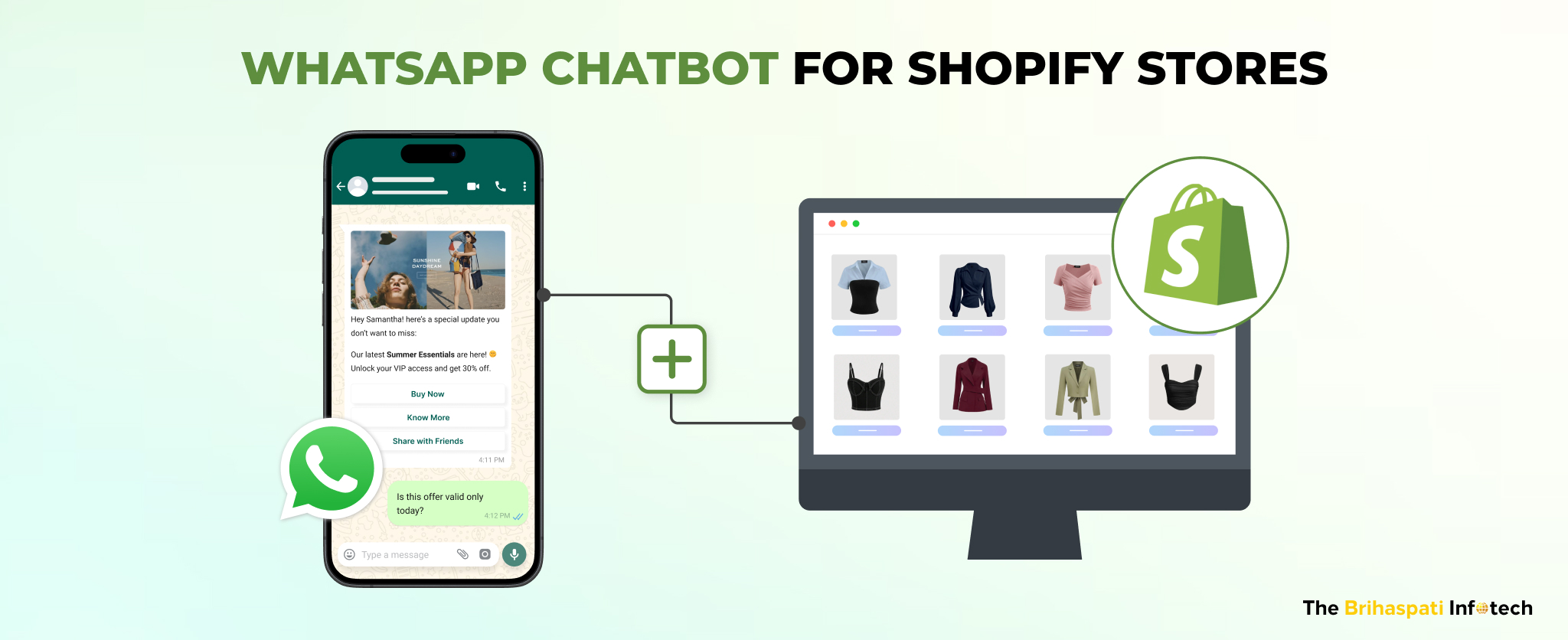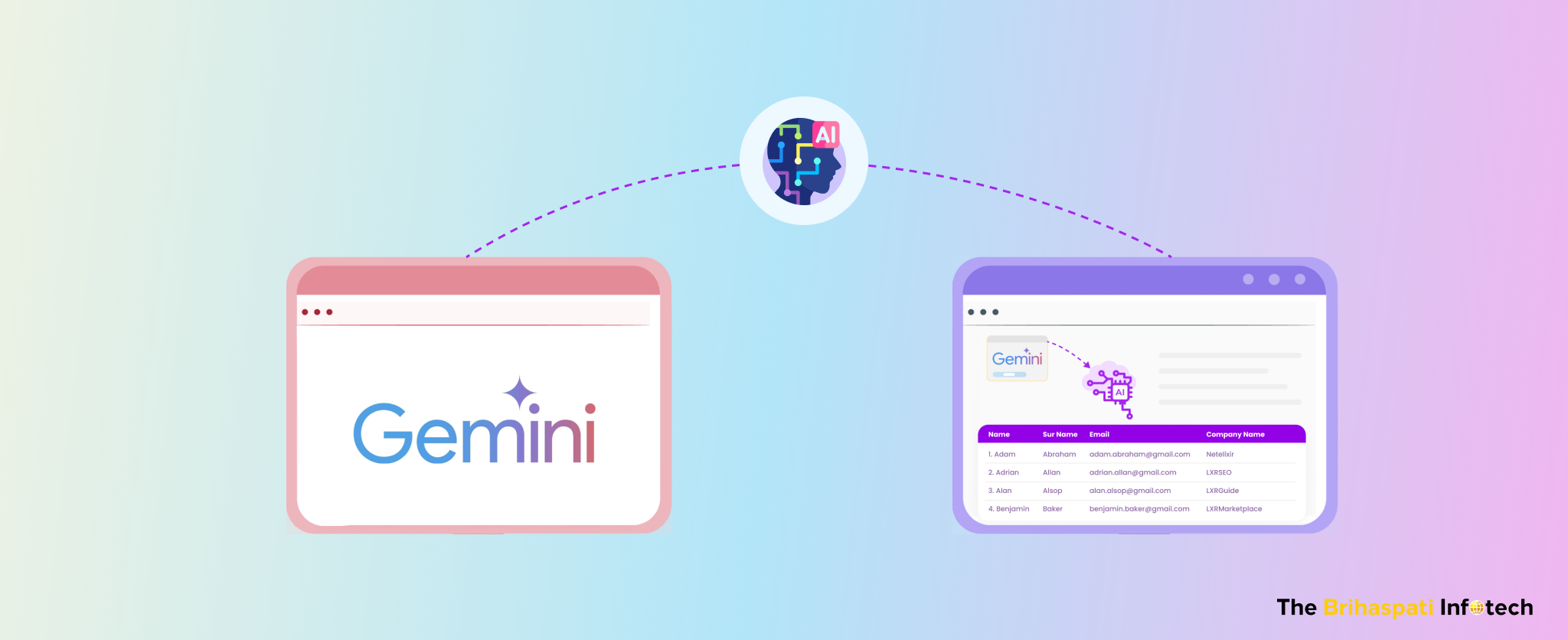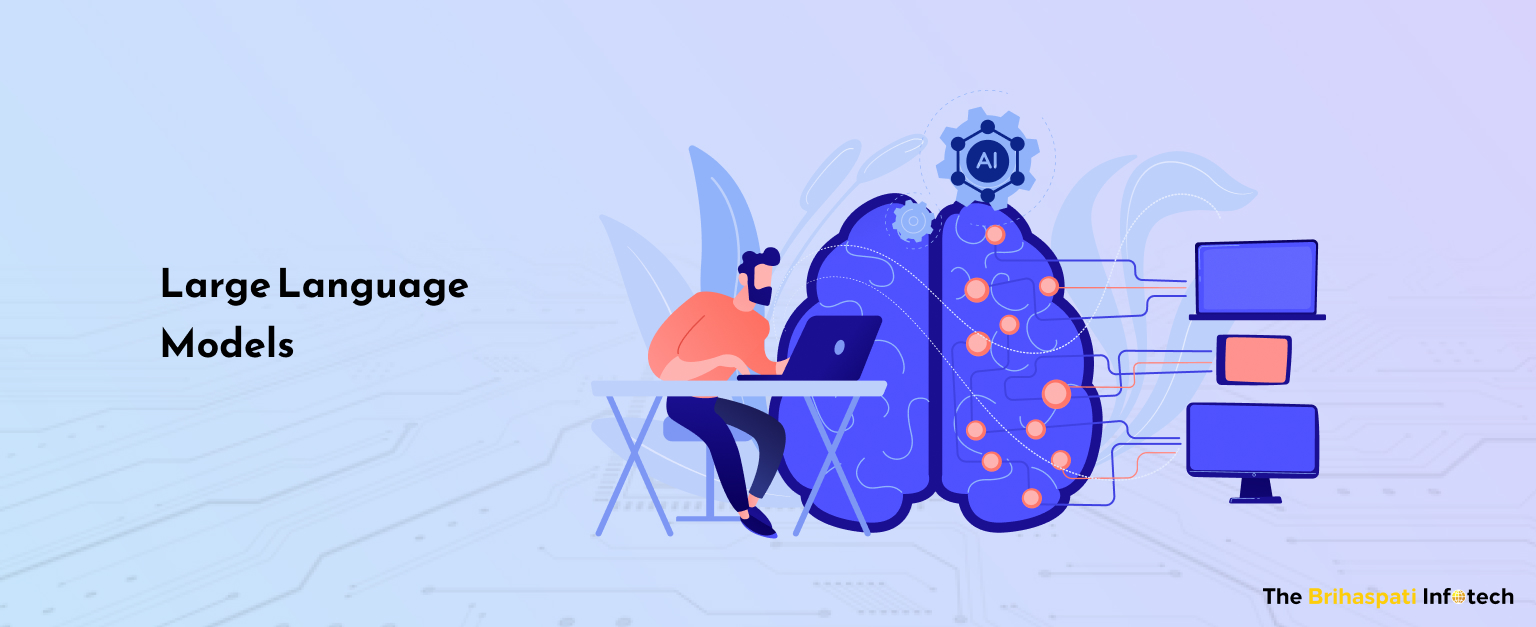
Large Language Models: All You Need to Know About Them
Imagine chatting with a computer and feeling like you’re conversing with a friend. That’s the magic of Large Language Models (LLMs). These language models have been trained on vast amounts of text, enabling them to understand and generate human language in ways that feel almost natural. From crafting stories to answering complex questions, LLMs are transforming how we interact with technology. But what exactly are Large Language Models, and why are they so crucial? This is exactly what our SAAS development company is going to answer. Let’s read along
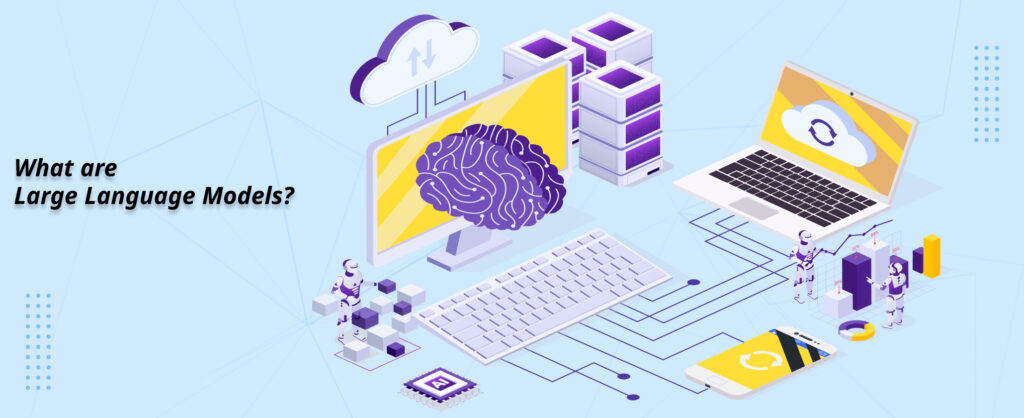
What is an LLM?
To start with the basics, a Large Language Model (LLM) is a type of artificial intelligence that can understand, generate, and manipulate human language. These models are trained on vast amounts of text data, allowing them to predict and generate coherent sentences based on the input they receive. Essentially, an LLM can be thought of as a highly advanced version of the autocomplete feature on your smartphone.
Any sufficiently advanced technology is indistinguishable from magic.
— Arthur C. Clarke
History of Large Language Models
The journey of Large Language Models began with simpler models like n-grams and has evolved through various iterations of neural networks, culminating in the sophisticated architectures we see today.
- Early NLP Models: Initial models focused on rule-based systems and simple statistical methods.
- Introduction of Neural Networks: The advent of neural networks brought significant improvements in language understanding.
- Transformer Networks: The introduction of transformers marked a breakthrough, enabling the development of powerful LLMs like GPT-3.
How Are LLMs Beneficial for E-commerce?
Large Language Models (LLMs) offer significant advantages for various businesses in the e-commerce sector. Here’s how different types of businesses can benefit:
- Online Retailers: LLMs power chatbots that provide 24/7 customer service, answering queries and resolving issues instantly, which improves customer satisfaction.
- Subscription Services: LLMs analyze customer interactions to predict churn and suggest personalized retention strategies, helping businesses maintain their subscriber base.
- Fashion and Apparel: Virtual shopping assistants powered by LLMs can help customers find the right sizes, colors, and styles, improving satisfaction and reducing return rates.
- Home Goods and Furniture: Integrating with AR, LLMs can help customers visualize how furniture and decor items will look in their homes.
- Beauty and Personal Care: LLMs can offer personalized beauty and skincare advice, recommend products based on skin type and preferences, and even suggest routines.
How Do Large Language Models Work?
Understanding how Large Language Models (LLMs) work involves diving into two primary processes: the synchronization process and search process. These processes enable LLMs to effectively understand and generate human language.
Synchronization Process
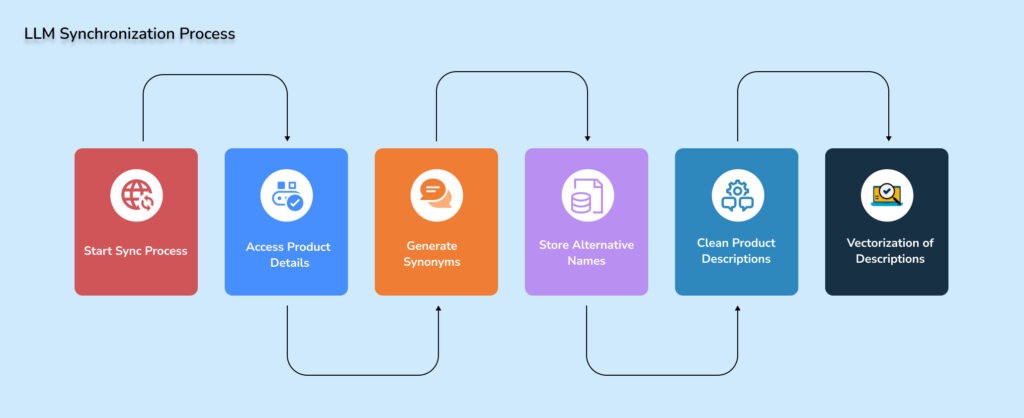
- This marks the initiation of the synchronization sequence where the system prepares to update data.
- Retrieve product metadata, including titles and descriptions, from the database.
- Decompose product titles into individual words and generate synonyms and alternative names for each word.
- Analyze overall product descriptions to generate additional synonyms and search-friendly alternative names.
- Store these generated synonyms and alternative names in the database, linking them to their respective products.
- Strip out special and foreign characters along with excessive whitespace.
- Filter out common but uninformative words such as “is,” “the,” etc., using the NLTK library.
- Apply lemmatization to standardize words to their base forms using WordNetLemmatizer from NLTK.
- Use a word embedding Sentence Transformers AI model to transform descriptions into vectors.
- Store these vectors in the database for subsequent retrieval and comparison.
- Mark the completion of the synchronization process, ensuring that all product data are up-to-date.
Search Process

- Provide real-time keyword suggestions based on user input to enhance the search experience using a custom Trie data structure.
- Users initiate the search process by entering a search query.
- Convert the search query into vectors using the same word embedding model applied in synchronization.
- Clean the search query by removing non-essential characters and spaces.
- Normalize the query words and remove non-informative words using the NLTK library.
- Refine query further by applying lemmatization based on part of speech using WordNetLemmatizer from NLTK.
- Fetch vectors of all products from the database to prepare for comparison with the search query vector.
- Compute the cosine similarity between the query vector and product vectors to find matches.
- Use the transformed search input/query to filter products by matching keywords in the returned product descriptions and their synonyms/alternative names.
- Enhance the search results by re-ranking them based on a deeper semantic analysis using a cross encoder model.
Large Language Model Architecture
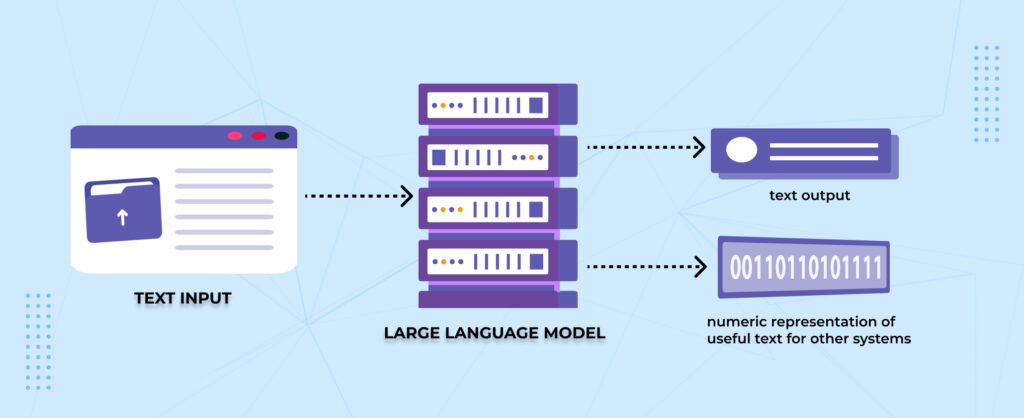
Large Language Models operate based on complex algorithms and architectures. At their core, they use neural networks to process and analyze language data. Specifically, these models leverage transformer architectures, which allow them to handle vast amounts of data and understand context better than previous models. By breaking down sentences into smaller components and analyzing their relationships, LLMs can generate highly accurate and contextually appropriate responses. This architecture is crucial for tasks that require understanding context, such as translation, summarization, and question-answering.
Applications of Large Language Models
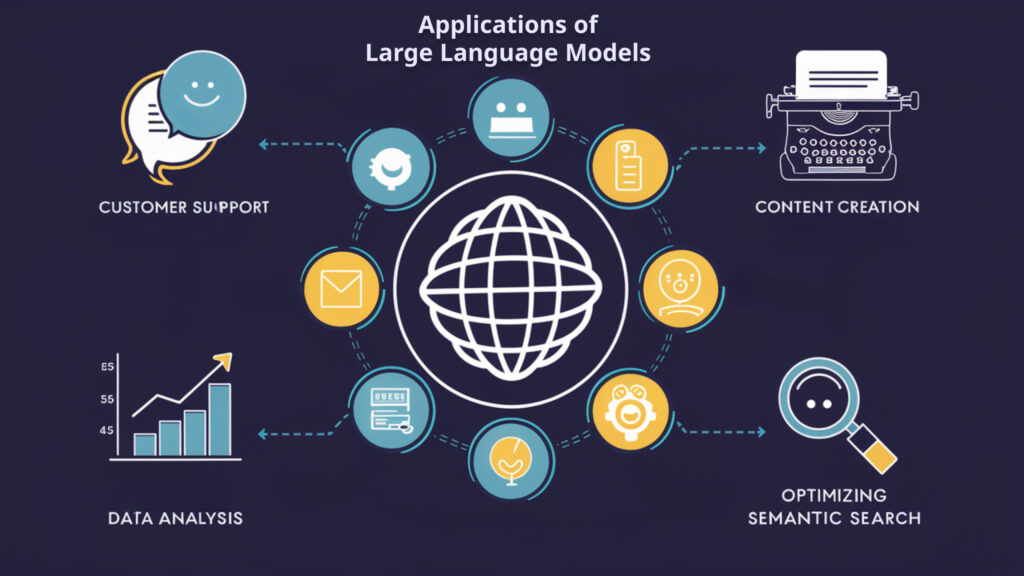
LLMs have a wide range of applications across various industries. Here are some notable examples:
1. Customer Support
LLMs can be used to create intelligent chatbots that handle customer inquiries efficiently. These chatbots can understand and respond to customer queries in a natural and human-like manner, improving customer satisfaction and reducing the workload on human support agents. LLMs can train multipurpose business chatbots for Slack to optimize business operations
2. Content Creation
From writing articles and blog posts to generating creative content, LLMs are revolutionizing the way content is produced. They can assist writers by providing suggestions, generating drafts, and even creating entire pieces of content based on given prompts. Large language models can also be used to curate a prompt management tool to effectively create content for various purposes.
3. Data Analysis
In the field of data analysis, LLMs can help in extracting insights from large volumes of text data. By understanding and summarizing complex documents, these models enable businesses to make informed decisions based on the extracted information. LLMs can be used to power ai based data extraction tools for extracting product details.
4. Optimizing Semantic Search
LLMs improve the efficiency of semantic search, which focuses on understanding the context and intent behind search queries. This capability enables businesses to provide more accurate and relevant search results on their platforms, enhancing user experience. By understanding the deeper meaning of queries, LLMs help users find what they are looking for faster, boosting engagement and satisfaction.
Popular Large Language Models
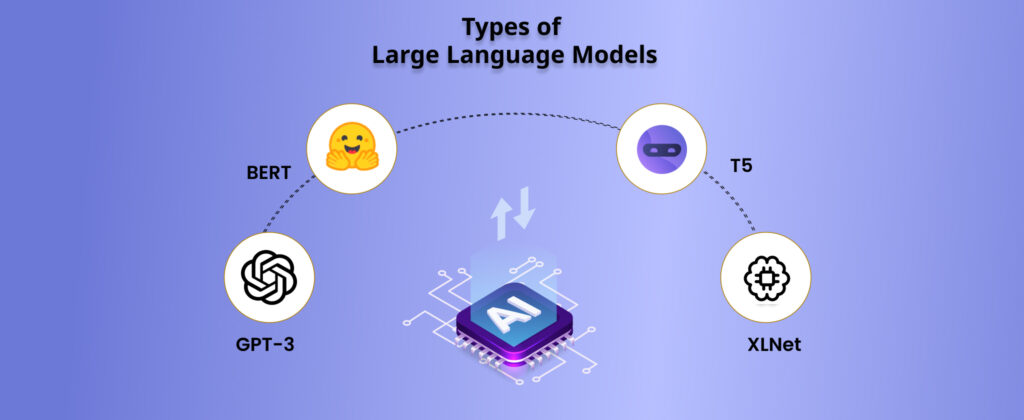
Several Large Language Models have gained popularity due to their impressive capabilities. Here are some of the most well-known ones:
— GPT-3: Developed by OpenAI, GPT-3 (Generative Pre-trained Transformer 3) is one of the most advanced LLMs available. It has 175 billion parameters, making it capable of generating highly accurate and contextually relevant text. GPT-3 is used in various applications, from chatbots to content creation tools.
— BERT: (Bidirectional Encoder Representations from Transformers) is another prominent LLM developed by Google. Unlike traditional models that read text sequentially, BERT reads text bidirectionally, allowing it to understand context more effectively. BERT is widely used in natural language understanding tasks.
—T5: (Text-To-Text Transfer Transformer) is an LLM developed by Google that treats every NLP problem as a text-to-text task. This approach simplifies the model and makes it more versatile, enabling it to perform a wide range of tasks with high accuracy.
— XLNet: A permutation language model, XLNet generated output predictions in a random order, which distinguishes it from BERT. It assesses the pattern of tokens encoded and then predicts tokens in random order, instead of a sequential order.
How to Use LLMs?
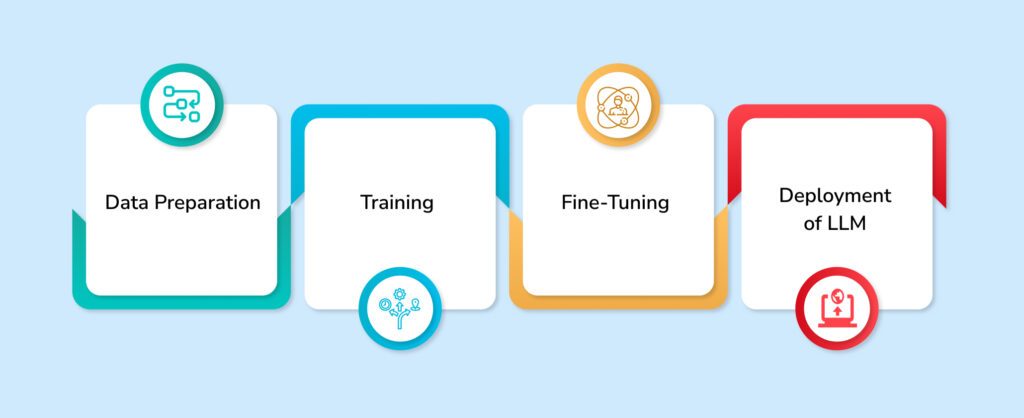
Using Large Language Models involves several steps:
- Data Preparation: The first step is to gather and preprocess the data that will be used to train the model. This involves cleaning the data, removing any irrelevant information, and formatting it appropriately.
- Training: The next step is to train the model using the prepared data. This process involves feeding the data into the model and adjusting its parameters to minimize errors. Training LLMs requires significant computational resources and time.
- Fine-Tuning: After the initial training, the model can be fine-tuned for specific tasks. This involves additional training on task-specific data to improve the model’s performance on those tasks.
- Deployment: Once the model is trained and fine-tuned, it can be deployed for use. This involves integrating the model into applications and systems where it can process and generate text as needed
Frequently Asked Questions
An LLM is an advanced AI model designed to understand, generate, and manipulate human language. These models are trained on vast amounts of text data, allowing them to predict and generate coherent sentences based on the input they receive.
LLMs use neural networks, specifically transformer architectures, to process and analyze language data. They break down sentences into smaller components, understand the context, and generate accurate and contextually appropriate responses.
LLMs can enhance customer support with intelligent chatbots, streamline content creation, improve data analysis, optimize semantic search, and assist in product development by analyzing customer feedback and market trends.
Popular LLMs include GPT-3 by OpenAI, BERT by Google, T5 by Google, and XLNet. Each model has unique capabilities and applications, such as generating human-like text, understanding context bidirectionally, and solving text-to-text tasks.
Businesses can use LLMs by preparing and preprocessing data, training the model, fine-tuning it for specific tasks, and deploying it in applications to process and generate text.
Our Final Words
Large Language Models represent a significant advancement in the field of artificial intelligence. Their ability to understand and generate human language has opened up new possibilities across various industries. Whether it’s improving customer service, enhancing content creation, or automating data analysis, LLMs are transforming the way we interact with technology.
In this article, we’ve explored what Large Language Models are, how they work, and their various applications. By understanding the potential of these models, businesses & individuals can harness their power to drive innovation and achieve new levels of efficiency. Whether you’re a startup owner, large business owner, or simply someone interested in the latest technological advancements, our SAAS development agency can help you explore this impactful technology to integrate within your system.
Stay Tuned for Latest Updates
Fill out the form to subscribe to our newsletter



